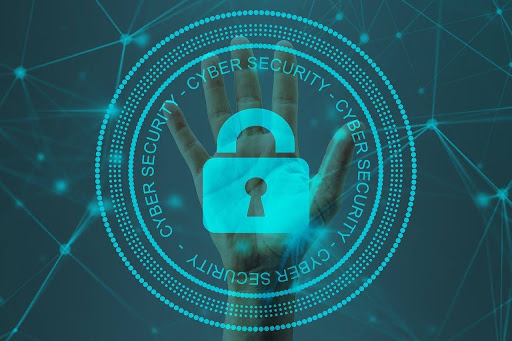8 Cybersecurity Measures Every Organization Should Take for a Secure Network

A secure network is the foundation of any organization’s digital infrastructure because it serves as the first line of defense against cyber threats. With the growing complexity of digital systems, organizations face increasing threats to their online security. As companies rely heavily on technology, the risk of data breaches, hacking, and other cyberattacks continues to rise.
Implementing strong cybersecurity measures is essential to safeguarding sensitive information and maintaining trust with customers. Without proper security protocols in place, organizations expose themselves to serious risks that can lead to financial losses, reputational damage, and operational disruptions. By taking steps to protect their systems, businesses can significantly reduce the likelihood of being targeted by cybercriminals.
Taking some important measures and steps can help keep your network secure and your data protected from malicious threats. Let’s explore some key cybersecurity measures that every organization should prioritize:
- Streamline Resources & Boost Security with Centralized Control
Managing users, computers, and network resources from a central point simplifies permissions and access controls, ensuring only authorized personnel access sensitive information. This approach not only enhances operational efficiency but also serves as a vital cybersecurity measure.
Active Directory auditing is essential for tracking changes within the system, helping to identify potential security risks. In the event of a ransomware or wiper attack compromising domain controllers, restoring the entire environment can take days or even weeks, heightening the risk of malware re-infection. However, the Directory Services Protector by Semperis offers a reliable solution by monitoring changes and comparing real-time data from multiple sources. This strategy limits access to critical systems, reducing the risk of internal threats.
- Implement a Strong Password Policy
One of the most basic yet crucial steps for improving cybersecurity is having a strong password policy. Weak passwords are one of the most common ways hackers gain unauthorized access to systems. A good password policy should require employees to create passwords that are difficult to guess and include a combination of letters, numbers, and special characters.
It’s also important to encourage employees to change their passwords regularly. In addition to this, using multi-factor authentication or two-factor authentication can add an extra layer of security. Users must provide two or more verification methods, like a password along with a code sent to their phone, before they are granted access to the system.
- Regular Software Updates & Patching
Maintaining up-to-date software is essential for strong network security. Hackers frequently take advantage of weaknesses in older software versions to infiltrate networks. By consistently updating your software, you address any security gaps or bugs, which helps lower the risk of a cyberattack.
Setting up automatic updates can be a helpful way to keep all your systems up-to-date without relying on manual checks. This not only saves time but also helps protect your organization from potential threats as soon as updates become available.
- Use Firewalls for Extra Protection
Firewalls act as a barrier between your internal network and the outside world. They monitor and control incoming and outgoing network traffic based on predetermined security rules. By installing and configuring a firewall, you can block unauthorized access to your network while allowing legitimate traffic through.
A well-configured firewall not only blocks known malicious sources but can also be set to detect unusual patterns of activity that might indicate a security breach. For example, firewalls can be configured to block certain IP addresses, restrict access to specific websites, or monitor for abnormal data transfer rates that could signal a hacking attempt. Firewalls also provide logging and reporting features, giving network administrators visibility into attempted breaches and helping them fine-tune security protocols.
- Train Employees on Cybersecurity Practices
Human error is one of the biggest security vulnerabilities in any organization. Many cyberattacks are successful because employees fall for phishing schemes, use weak passwords, or unknowingly download malware. Training employees on cybersecurity best practices can go a long way in preventing these incidents.
Regular training sessions should cover topics like identifying phishing emails, safe internet browsing habits, and how to report suspicious activity. By educating your staff, you can significantly reduce the likelihood of human error leading to a security breach.
- Backup Data Regularly & Securely
Backing up data is one of the most essential cybersecurity practices for any organization. Regular data backups protect your business from threats like ransomware attacks, hardware failures, and accidental data loss. By storing copies of your data in a secure location, you can recover important information even if the original files are lost or compromised.
It is also important to store backups securely. Using encrypted cloud storage or offsite physical backups reduces the risk of data being accessed by unauthorized individuals. Additionally, testing your backup system periodically can help confirm that your data can be restored effectively in the event of a breach or system failure.
- Secure Access with Private Networks
With the rise of remote work, securing access to an organization’s network from outside locations has become more important. Using Virtual Private Networks is one effective way to do this. A VPN creates a secure connection between an employee’s device and the organization’s network, allowing remote workers to access sensitive data safely.
VPNs not only protect the data in transit but also provide an added layer of privacy by masking the user’s IP address, making it more difficult for cybercriminals to track or target their online activity. This is particularly important when employees use public Wi-Fi or unsecured networks, which are common in remote work environments. In these situations, a VPN helps mitigate the risk of man-in-the-middle attacks, where hackers intercept communications between the employee and the company network.
- Monitor & Log Network Activity
Monitoring and logging network activity are crucial to identifying suspicious behavior and detecting potential security breaches before they cause significant harm. By keeping track of who is accessing your network, when, and what they are doing, you can quickly spot irregularities that may indicate a cyberattack.
Security information and management tools can help automate this process by collecting and analyzing data from across your network. These tools send alerts when they detect unusual behavior, allowing your security team to act promptly. Regularly reviewing these logs and acting on the insights they provide can help maintain a strong defense against cyber threats.
Cybersecurity is a critical concern for organizations of all sizes. By taking some essential steps, companies can protect themselves from a wide range of threats. By staying proactive and prioritizing these cybersecurity measures, organizations can significantly reduce the risk of data breaches and cyberattacks, keeping their networks and sensitive information safe.
Keep an eye for more latest news & updates on Tech Promagazine!





